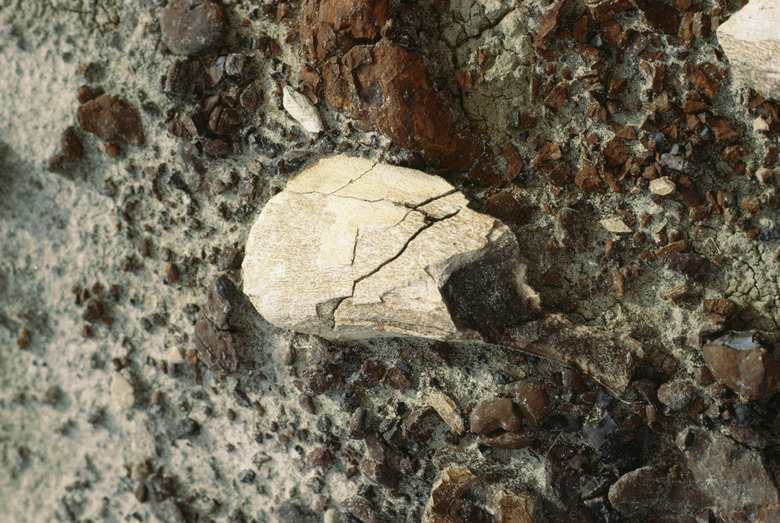Large Fossilized Sea Shell Identification
According to evolution, all live evolved from a rich primordial sea full of single-celled organisms. These organisms evolved first into sea worms and eventually into shelled ocean-dwellers, some of which still have cousins living in the sea today. Identifying these ancient sea fossils can be tricky, especially since some of the variations in the creatures were so small. However, the larger the creatures became, the more variations there were, making the task of identification easier. It is the largest of these early many-celled organisms that scientists still use to compare fossils and place them in the evolutionary timeline.
Circular Fossils
Circular Fossils
Most circular fossils range from about the size of a quarter to about the size of a silver dollar. They are not usually perfect spheres, but have rounded tops and bottoms and rounded edges. These are usually crinoid columnals, a type of prehistoric coral. The lobes of this coral formed, fell and were fossilized in this shape. There are variations including star impressions in the circles' centers, lines radiating outward from the center and small holes going through the edge of the circle. These holes were probably similar to the sap system in trees, delivering nutrients to different parts of the coral.
C-Shaped Fossils
C-Shaped Fossils
There are two types of c-shaped fossils. These fossils are three-dimensional and puffy with one rounded edge and one nearly flat edge. There should be two sides to these fossils. If the sides are identical, the fossil is an ancient bivalve, or clam. If they are dissimilar, the creature was a brachiopod, an ancient cousin to the clam. Bivalves will also have lines running from front to back across their shells, while brachiopods usually have lines running across the shells.
Spiral Shapes
Spiral Shapes
Small spiral shapes, less than 3 cm across, are probably ancient gastropods, or snails. Snails have always been small, unlike the prehistoric ancestors of other animals. Snail shells will be a flat spiral rather than a pointed one, resembling a coil of clay.
Larger coils, 5 cm or larger in length, which are pointed and long rather than flat, are probably cephalopod remains. These are the ancient precursors to squid and octopi. These ancient creatures had shells, unlike most modern cephalopods, but were equipped with multiple limbs like their descendants.
Cite This Article
MLA
Shoop, Megan. "Large Fossilized Sea Shell Identification" sciencing.com, https://www.sciencing.com/large-fossilized-sea-shell-identification-5745194/. 24 April 2017.
APA
Shoop, Megan. (2017, April 24). Large Fossilized Sea Shell Identification. sciencing.com. Retrieved from https://www.sciencing.com/large-fossilized-sea-shell-identification-5745194/
Chicago
Shoop, Megan. Large Fossilized Sea Shell Identification last modified March 24, 2022. https://www.sciencing.com/large-fossilized-sea-shell-identification-5745194/
